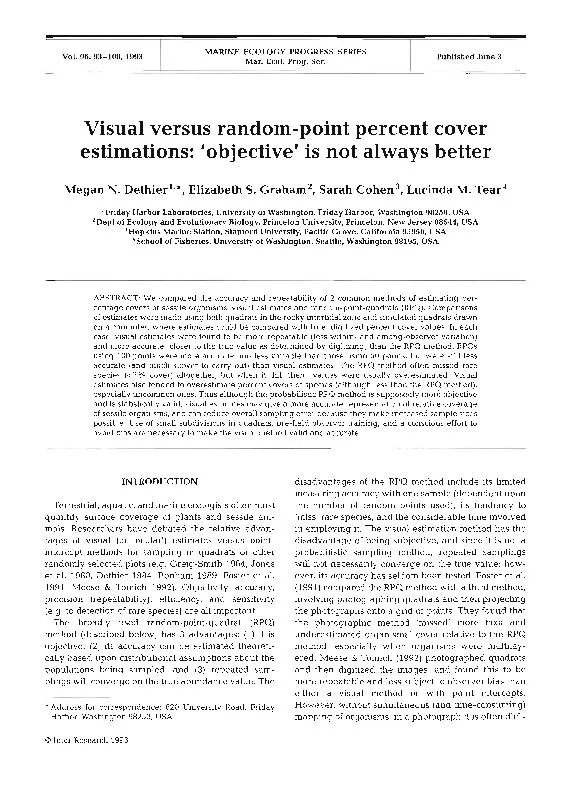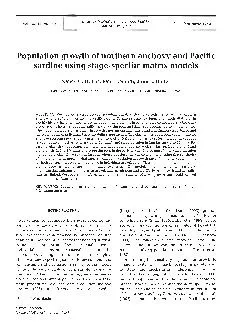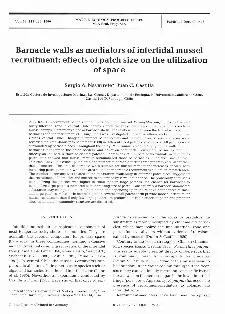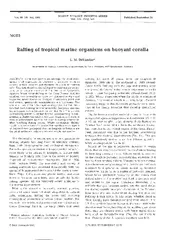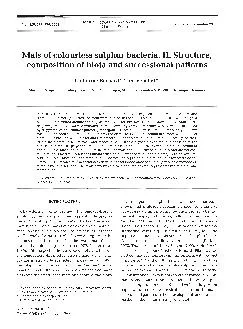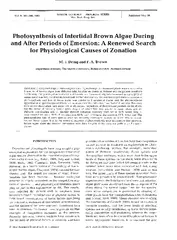PDF-MARINE ECOLOGY PROGRESS SERIES versus random-point 'objective' is not
Author : olivia-moreira | Published Date : 2016-06-02
differ significantly each other digitized values illustrates differences among the observer showed the the true value the results also differed widely Observers
Presentation Embed Code
Download Presentation
Download Presentation The PPT/PDF document "MARINE ECOLOGY PROGRESS SERIES versus ra..." is the property of its rightful owner. Permission is granted to download and print the materials on this website for personal, non-commercial use only, and to display it on your personal computer provided you do not modify the materials and that you retain all copyright notices contained in the materials. By downloading content from our website, you accept the terms of this agreement.
MARINE ECOLOGY PROGRESS SERIES versus random-point 'objective' is not: Transcript
Download Rules Of Document
"MARINE ECOLOGY PROGRESS SERIES versus random-point 'objective' is not"The content belongs to its owner. You may download and print it for personal use, without modification, and keep all copyright notices. By downloading, you agree to these terms.
Related Documents

